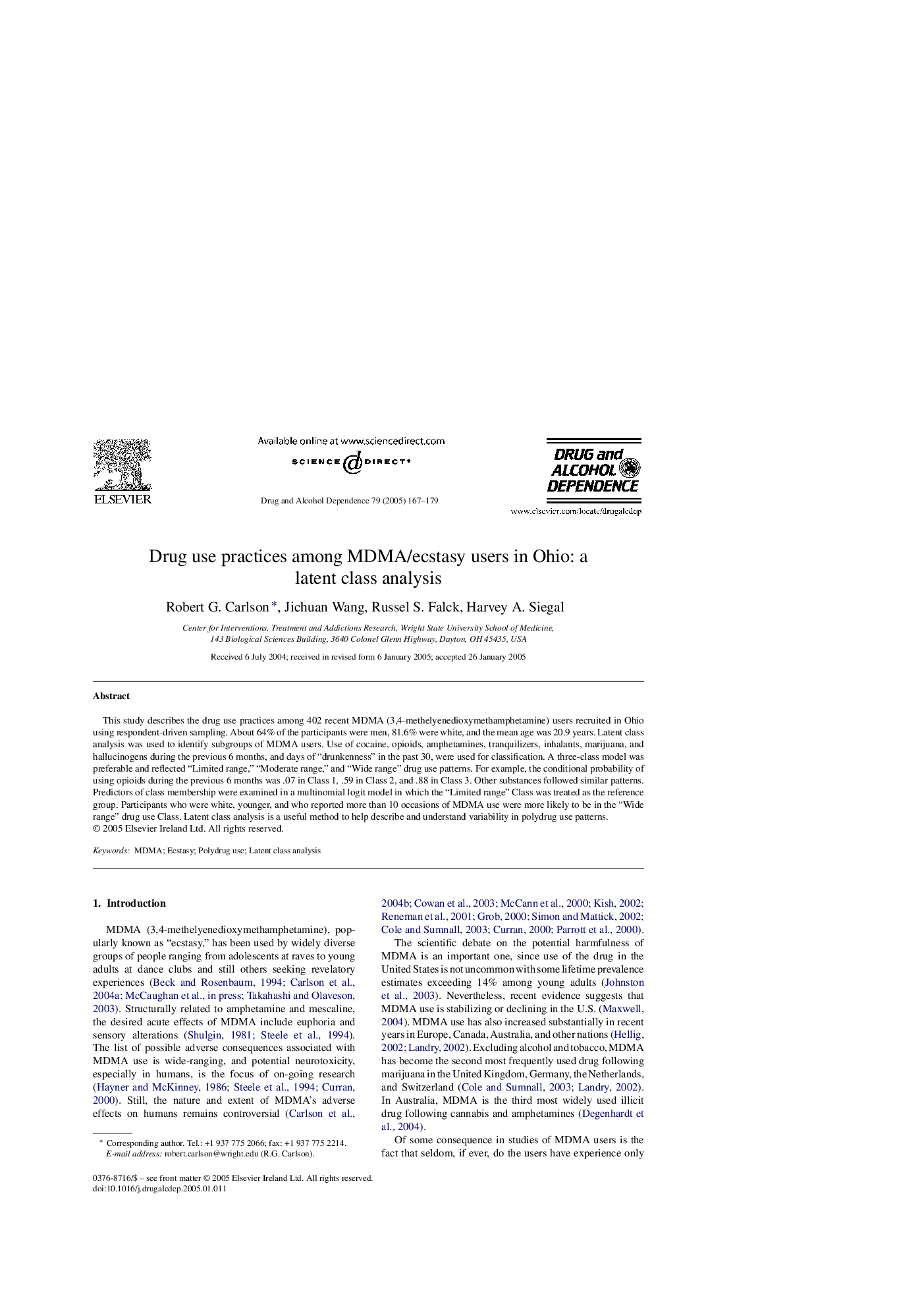| Article ID | Journal | Published Year | Pages | File Type |
|---|---|---|---|---|
| 10509888 | Drug and Alcohol Dependence | 2005 | 13 Pages |
Abstract
This study describes the drug use practices among 402 recent MDMA (3,4-methelyenedioxymethamphetamine) users recruited in Ohio using respondent-driven sampling. About 64% of the participants were men, 81.6% were white, and the mean age was 20.9 years. Latent class analysis was used to identify subgroups of MDMA users. Use of cocaine, opioids, amphetamines, tranquilizers, inhalants, marijuana, and hallucinogens during the previous 6 months, and days of “drunkenness” in the past 30, were used for classification. A three-class model was preferable and reflected “Limited range,” “Moderate range,” and “Wide range” drug use patterns. For example, the conditional probability of using opioids during the previous 6 months was .07 in Class 1, .59 in Class 2, and .88 in Class 3. Other substances followed similar patterns. Predictors of class membership were examined in a multinomial logit model in which the “Limited range” Class was treated as the reference group. Participants who were white, younger, and who reported more than 10 occasions of MDMA use were more likely to be in the “Wide range” drug use Class. Latent class analysis is a useful method to help describe and understand variability in polydrug use patterns.
Related Topics
Life Sciences
Neuroscience
Behavioral Neuroscience
Authors
Robert G. Carlson, Jichuan Wang, Russel S. Falck, Harvey A. Siegal,
